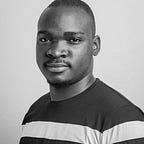Using Art to Improve Access to Information on COVID-19: Fighting Misinformation and Building Vaccine Confidence.
Since the outbreak of the COVID-19 pandemic, there has been an increase in health-related misinformation and disinformation specifically on the coronavirus disease, the vaccine, and other issues relating to the virus.
Globally, state and non-state actors have come up with initiatives and strategies to combat this infodemic. In Uganda, a section of the population especially those living in low internet penetrable areas and those without access to radios and televisions are still being excluded in the conversation on COVID-19 with little or no information reaching them.
How can we best ensure access to information on COVID-19 for these marginalised communities?
Globally, access to information is a fundamental human right recognized by international human rights instruments including article 19 of the Universal Declaration of Human Rights (UDHR). And at a regional level, the right to access information is enshrined in article 9 of the African Charter on Human and People’s Rights (ACHPR) which states that “Every individual shall have the right to receive information and the right to express and disseminate his/her opinions within the law”.
In Uganda, the right to access information is enshrined in Article 41 of the Constitution (1995) and the Access to Information Act (ATIA), 2005, and later the Access to Information Regulations, 2011 all regulations seek to promote the right to access information, promote an efficient, effective, transparent, and accountable Governance and enable the public to effectively access and participate in decisions that affect them as citizens of the country.
The Ugandan Government through the Ministry of Health and Ministry of ICT and National Guidance has made tremendous efforts to design campaigns and disseminate information on COVID-19 through media. Access to information remains a dream to a big section of Ugandans especially those in the peripheries.
Thus there is a need for civil society and other non-state actors to play a greater role in ensuring access to information for everyone regardless of their literacy levels and abilities.
As Pollicy, we teamed up with Paint the Change and Health Studio to work on a campaign using Art to fight covid-19 related misinformation and disinformation in local communities of Kampala (Kawempe).
The project targets local indigenous communities including low socioeconomic communities that are “socially excluded” with limited or no access to information.
In December 2021, Pollicy was at Action For Fundamental Change and Development (AFFCAD) School in Bwaise II parish, Nakamero Zone, Kawempe Division where the community including children, parents, persons living with disabilities, youths, and the elderly were engaged in a full-day workshop on COVID-19 misinformation. Through this workshop, the community was educated on what misinformation is and how it manifests itself and the community members were also able to share how covid-19 related misinformation has manifested in their community giving examples that were later fact-checked by an information specialist together with a medical doctor.
This workshop also featured in a co-creation session where community members brainstormed and created sketch murals that would best represent the information discussed in the workshop which murals would later be installed in the community for everyone to see and interact with.
Through a participatory approach, we then worked with The.Wamala Art of Vodo Art Lab and Society teamed up with the community members to install a mural that depicts information on COVID-19, the Vaccine, and how to fight Misinformation.
Why Art/ Murals?
Art is not only a form of action, it is a form of social action. For art is a type of communication, and when it enters the environment it produces its effects just as any other form of action does.- Rothko, The Artist’s Reality:Philosophies of Art (Yale, UP, 2004)
Art like Data Artistry (a new form of art that combines data and design for storytelling) has massive power to move people to social change. Art reaches people regardless of their literacy levels in their everyday environments, confronting and highlighting them with the existing social injustices of issues that would otherwise easily be ignored.
Next steps….
In January 2022, We shall team up with a local radio station in Mbale, Eastern Uganda, to engage locals in a similar conversation, understand what COVID-19 misinformation exists in their communities and then go ahead to co-create, design, and install murals in the communities.
To learn more, check out Pollicy
Other Interesting reads
